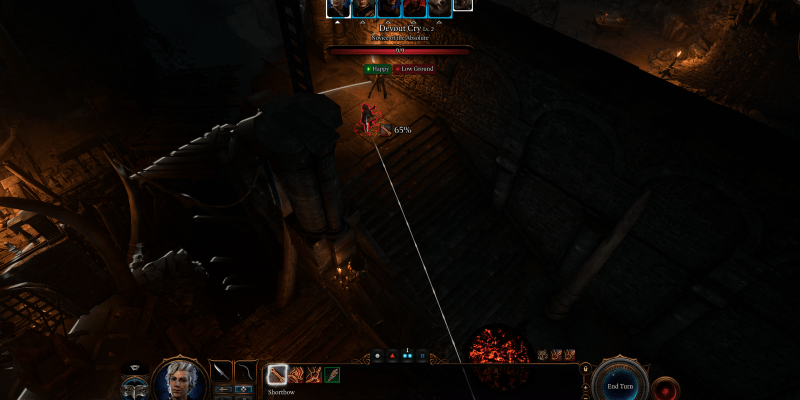As Obi-Wan Kenobi once said, “It’s over Anakin, I have the high ground”—and he was not wrong. Having the high ground is a pretty big advantage and that holds true in Baldur’s Gate 3. Positioning your party in advantageous high ground positions before or during battle can make all the difference in tough fights. Not only do you gain advantages, but your opponents have to overcome disadvantages, which can mean missed shots and spells and plenty of damage prevented for your party.
The Effects of High Ground and Low Ground in BG3
Taking the high ground whenever possible in Baldur’s Gate 3 is a good way to gain a tactical advantage in battles. When you attack an enemy from an elevated position, you gain a +2 bonus to your attack rolls against them, which is a big deal in ensuring your attacks land. In contrast, your enemies won’t be able to see you as clearly and they have to reach or try harder to aim upwards, resulting in them having a disadvantage. Attacking from below means a -2 penalty to attack rolls, which means enemies are less likely to hit you (and the same works in reverse if you’re in that position).
So, having the high ground means you’ll be landing attacks more often and avoiding damage more often as well, which is a pretty big advantage! You should keep this in mind whenever you enter a battle. You won’t always have high ground to take, but if it’s an option, do your best to reach it. And if an enemy has the high ground and you’re on the low ground, it’s usually a better idea to try to reposition and get level with them rather than trying to fight them with the disadvantage.
That’s it for high ground and low ground positioning in Baldur’s Gate 3. Make sure you’re taking advantage of this system when possible, and channel your inner Obi-Wan! And if you need more tips to help you with this sprawling RPG, make sure to look through our full range of guides.
